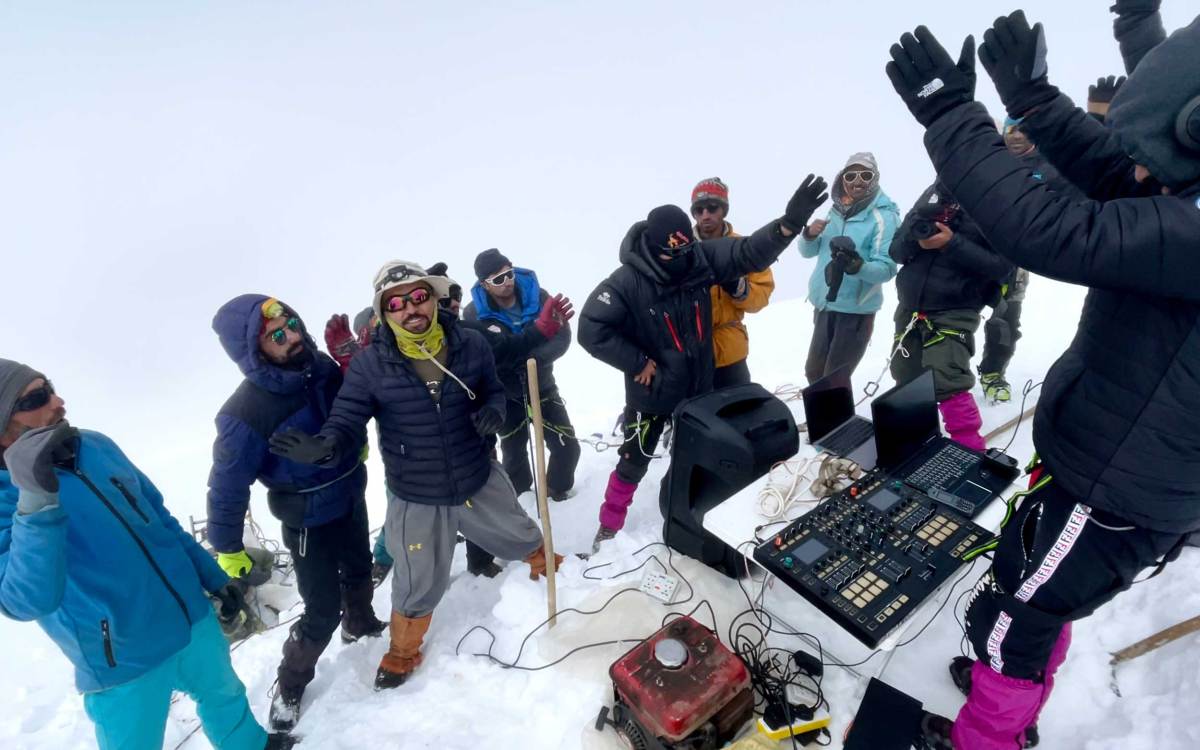When your hobby becomes breaking World Records
Just before graduating, Guinness honoree recruits pal and they enter books for topping old distance for catching gummy candy in mouth
It was really kind of like tossing treats to your puppy during training.
Will Sorenson and Ryan Hong both played on the Harvard men’s volleyball team before graduating last May.
“We would always have gummy bears on the sideline for quick sugar, quick energy,” explained Sorenson, a graduate of the John A. Paulson School of Engineering and Applied Sciences, now a mechanical engineer at Boeing. “After matches, Ryan would throw them at me, and I would catch them in my mouth.” Teammates cheered. They tried longer and longer distances. Teammates cheered louder. That should’ve been the end of it.
But no. So now, the Guinness World Record for “the greatest distance catching a gummy candy in the mouth” — 177 feet, 2 inches, to be exact — belongs to Sorenson and Hong, who performed the stunt at Harvard Stadium a few days before graduation in May.
@guinnessworldrecords Greatest distance catching a gummy candy in the mouth: 54 m (177 ft 2 in) by Will Sorenson and Ryan Hong 🇺🇸 #candy #gummy #catch #catcher #guinnessworldrecords ♬ original sound – Guinness World Records
Their feat was a first, but it wasn’t Sorenson’s first Guinness. Blame it on social distancing stir-craziness, but after many practice sessions from his Currier House room during the pandemic, Sorenson (who is also a juggler) became the record-holder for “most consecutive bottle flips behind the back onto the forehead” in February of 2021. Don’t ask. (It was 31.)
So after recruiting Hong, and what felt like half the volleyball team as support staff, Sorenson began plotting a second record attempt: Just how far could they launch a gummy candy into the air, and catch it?
They did some research and discovered the existing record was 50 meters, or about 164 feet. And Guinness required the toss needed to be executed “mechanically,” so off to the internet for a slingshot.
“That gummy bear was glowing in the night. You could see that thing from half a mile away.”
Catching a gummy candy from that distance was sure to be a choking hazard, which wasn’t lost on Sorenson. Luckily, he had developed proper technique — using his tongue to block the throat, so his trachea was safe.
It’s a good thing, too, because according to a quick approximation by Harvard physics lecturer Greg Kestin, that bear could’ve been traveling at a clip of close to 22 miles per hour — comparable to that of a raindrop falling from the clouds. (But a little slower than a grizzly, admittedly the fastest of all bears, which can move at speeds up to about 35 mph.)

Practice sessions in broad daylight unearthed one big problem — it was hard to see the candy in mid-air. That was when someone at Harvard Athletics had an idea. Could the open expanse of the football field, and a night sky illuminated by stadium lights, make it easier?
“When we tried it, it was like that gummy bear was glowing in the night. You could see that thing from half a mile away,” Sorenson said.
In the end it took Sorenson and Hong just two tries, with the achievement captured from several angles on smartphone video. At least six friends were deployed to help with candy-spotting, verification, and video documentation, per strict Guinness rules. And Philip Tor, assistant athletic director, served as official surveyor, even writing a letter attesting to the record distance.
Hong, an economics and statistics grad now working in investment banking, was pleased with the outcome, calling it “a unique and memorable way to end my experience” at the College.





